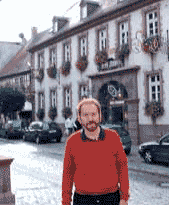After decades of teaching students about the German language, culture, history, holidays, festivals, customs, and traditions, I have decided to discontinue my website. Many thanks to the students, teachers, and others who spent time on the website learning about Germany.
interaktive Landkarte Deutschlands
(Interactive Map of Germany)
Skip Interactive Map
 - State Capital
- State Capital - Federal Capital
- Federal Capital - Major City
- Major City
